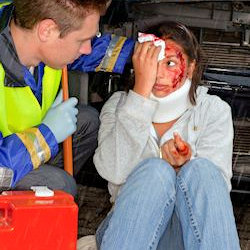To Whom Does the Standard Apply?
The standard applies to all employees who have occupational exposure to blood or other potentially infectious materials (OPIM). Workers in many occupations, including first responders, housekeeping personnel in some industries, nurses and other healthcare personnel, all may be at risk for exposure to bloodborne pathogens.
- Occupational exposure is defined as "reasonably anticipated skin, eye, mucous membrane, or parenteral contact with blood or OPIM that may result from the performance of the employee's duties."
- Blood is defined as "human blood, human blood components, and products made from human blood."
- Other potentially infectious materials (OPIM) means:
- The following human body fluids: semen, vaginal secretions, cerebrospinal fluid, synovial fluid, pleural fluid, pericardial fluid, peritoneal fluid, amniotic fluid, saliva in dental procedures, any body fluid that is visibly contaminated with blood, and all body fluids in situations where it is difficult or impossible to differentiate between body fluids;
- Any unfixed tissue or organ (other than intact skin) from a human (living or dead); and
- HIV-containing cell or tissue cultures, organ cultures, and HIV- or HBV-containing culture medium or other solutions; and blood, organs, or other tissues from experimental animals infected with HIV or HBV.
You can find more information on recognizing workplace hazards associated with bloodborne pathogens on OSHA's Hazard Recognition Page.
Knowledge Check Choose the best answer for the question.
1-2. Who is covered by OSHA's Bloodborne Pathogens standard?
You forgot to answer the question!

